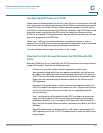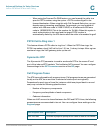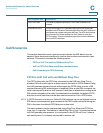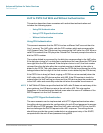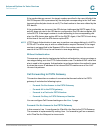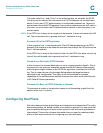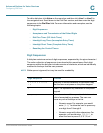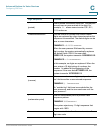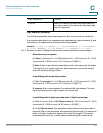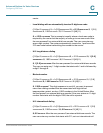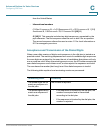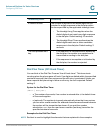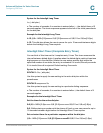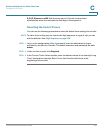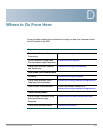
Advanced Options for Voice Services
Configuring Dial Plans
Cisco SPA232D Administration Guide 230
C
from the United States.
• Informational numbers
( [1-8]xx | 9, xxxxxxx | 9, <:1>[2-9]xxxxxxxxx | 8, <:1212>xxxxxxx | 9, 1 [2-9]
xxxxxxxxx | 9, 1 900 xxxxxxx ! | 9, 011xxxxxx. | 0 | [49]11 )
0 | [49]11 This example includes two digit sequences, separated by the
pipe character. The first sequence allows a user to dial 0 for an operator.
The second sequence allows the user to enter 411 for local information or
911 for emergency services.
Acceptance and Transmission of the Dialed Digits
When a user dials a series of digits, each sequence in the dial plan is tested as a
possible match. The matching sequences form a set of candidate digit sequences.
As more digits are entered by the user, the set of candidates diminishes until only
one or none are valid. When a terminating event occurs, the ATA either accepts the
user-dialed sequence and initiates a call, or else rejects the sequence as invalid.
The user hears the reorder (fast busy) tone if the dialed sequence is invalid.
The following table explains how terminating events are processed.
Terminating Event Processing
The dialed digits do not
match any sequence in
the dial plan.
The number is rejected.
The dialed digits exactly
match one sequence in
the dial plan.
• If the sequence is allowed by the dial plan, the
number is accepted and is transmitted
according to the dial plan.
• If the sequence is blocked by the dial plan, the
number is rejected.



